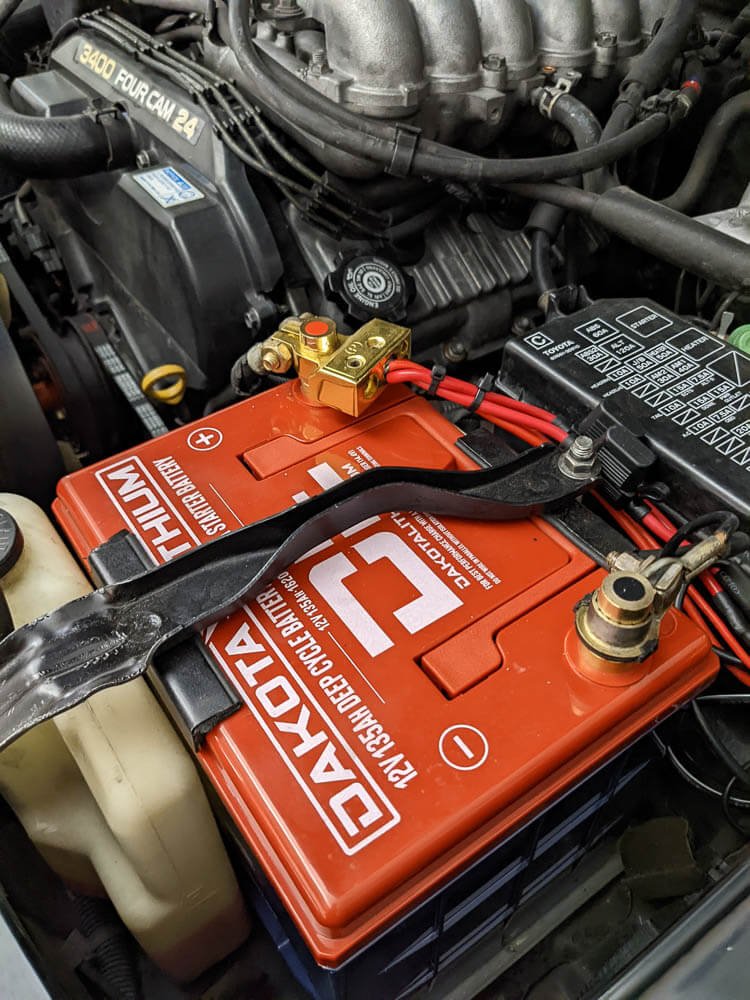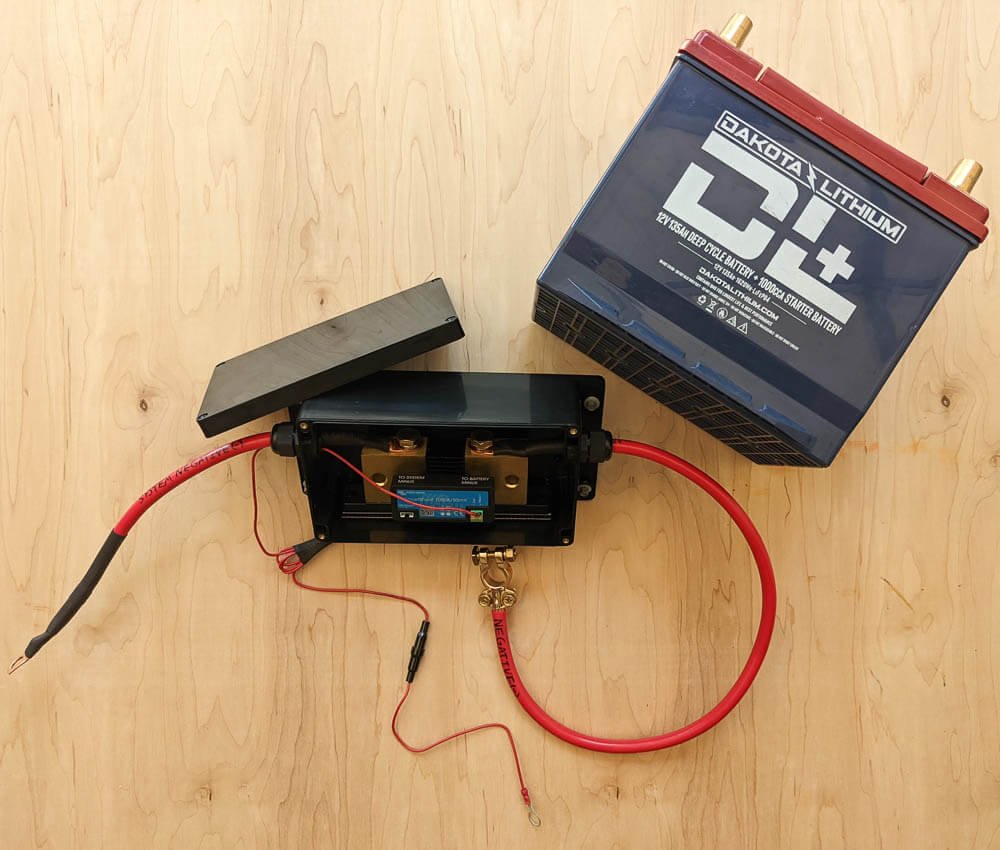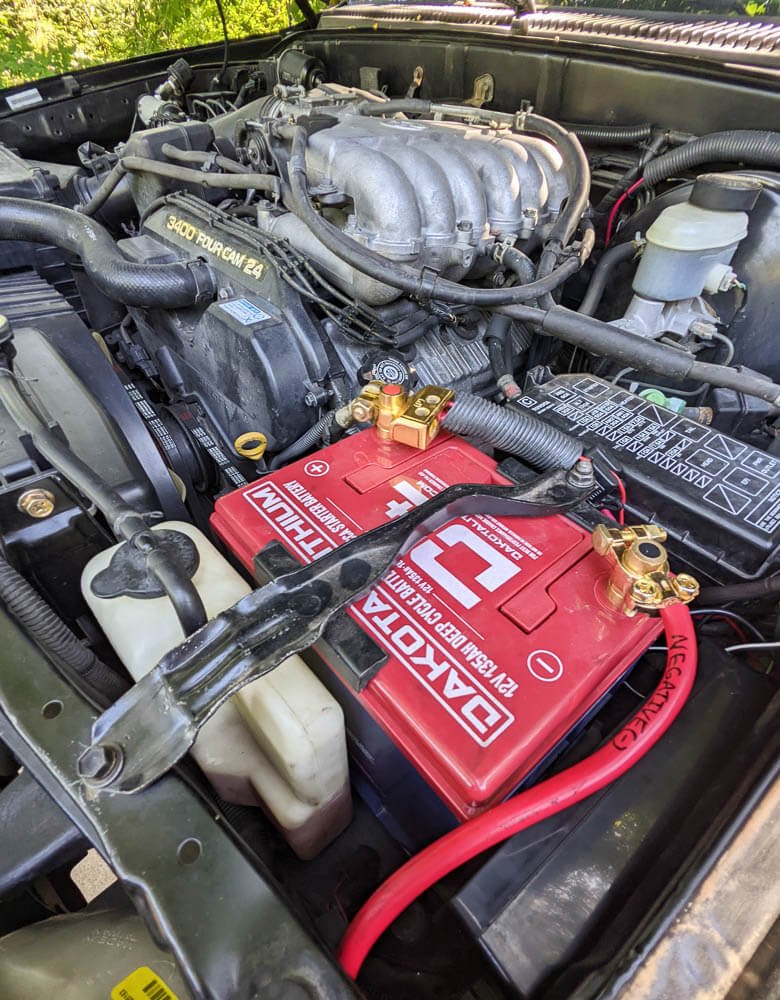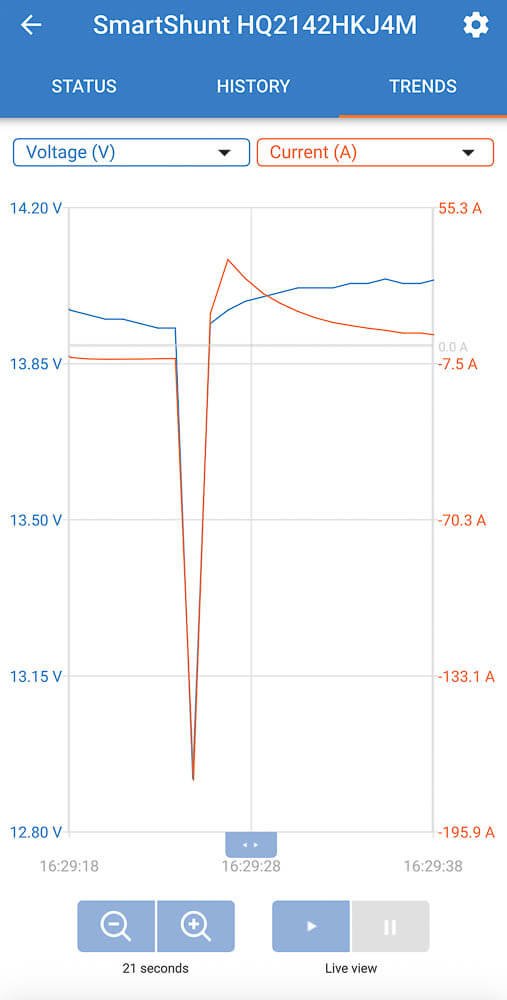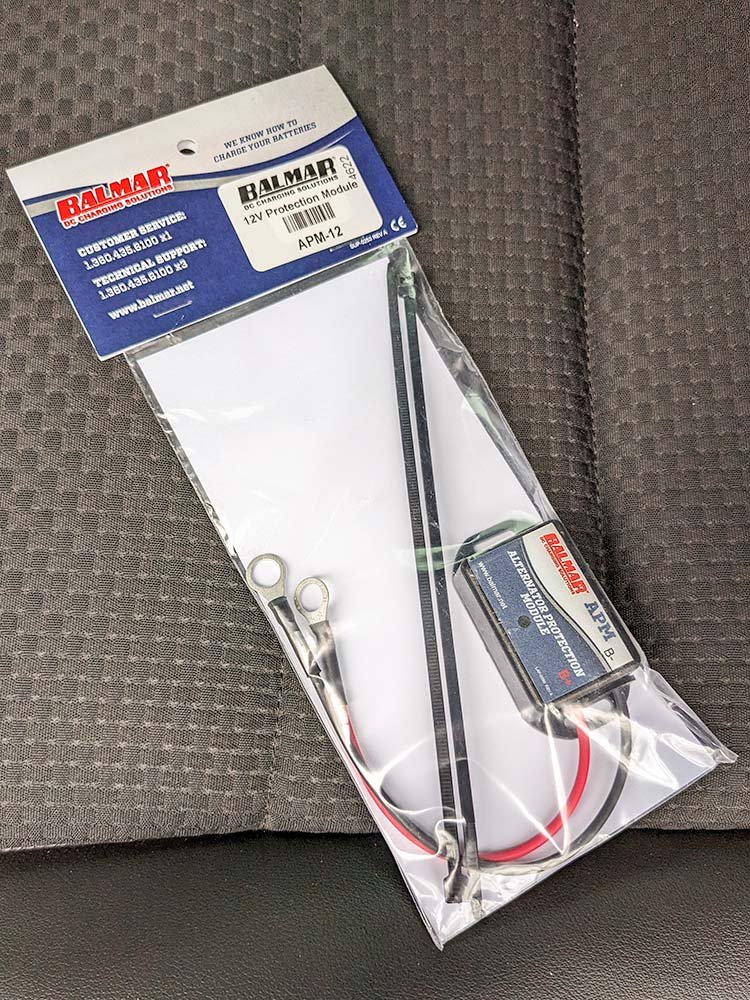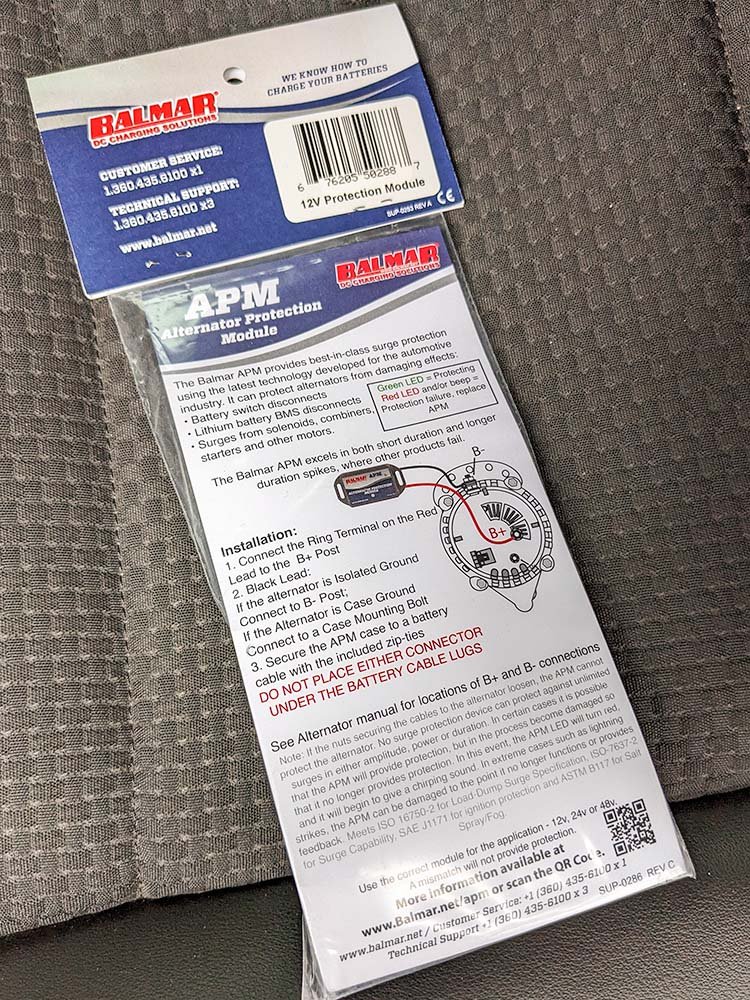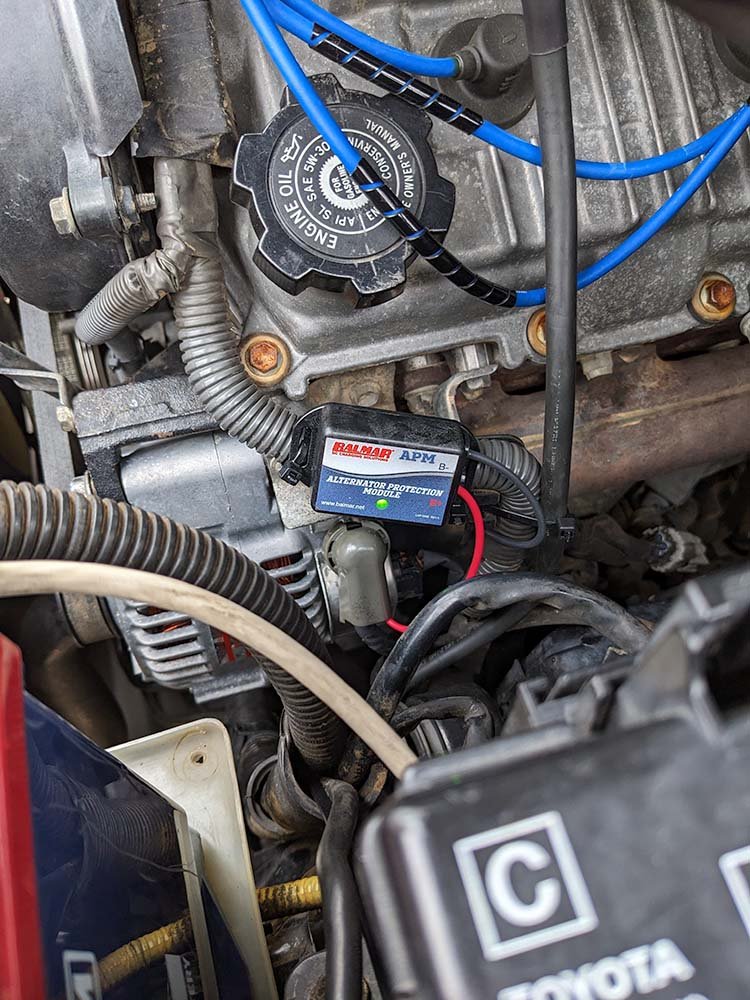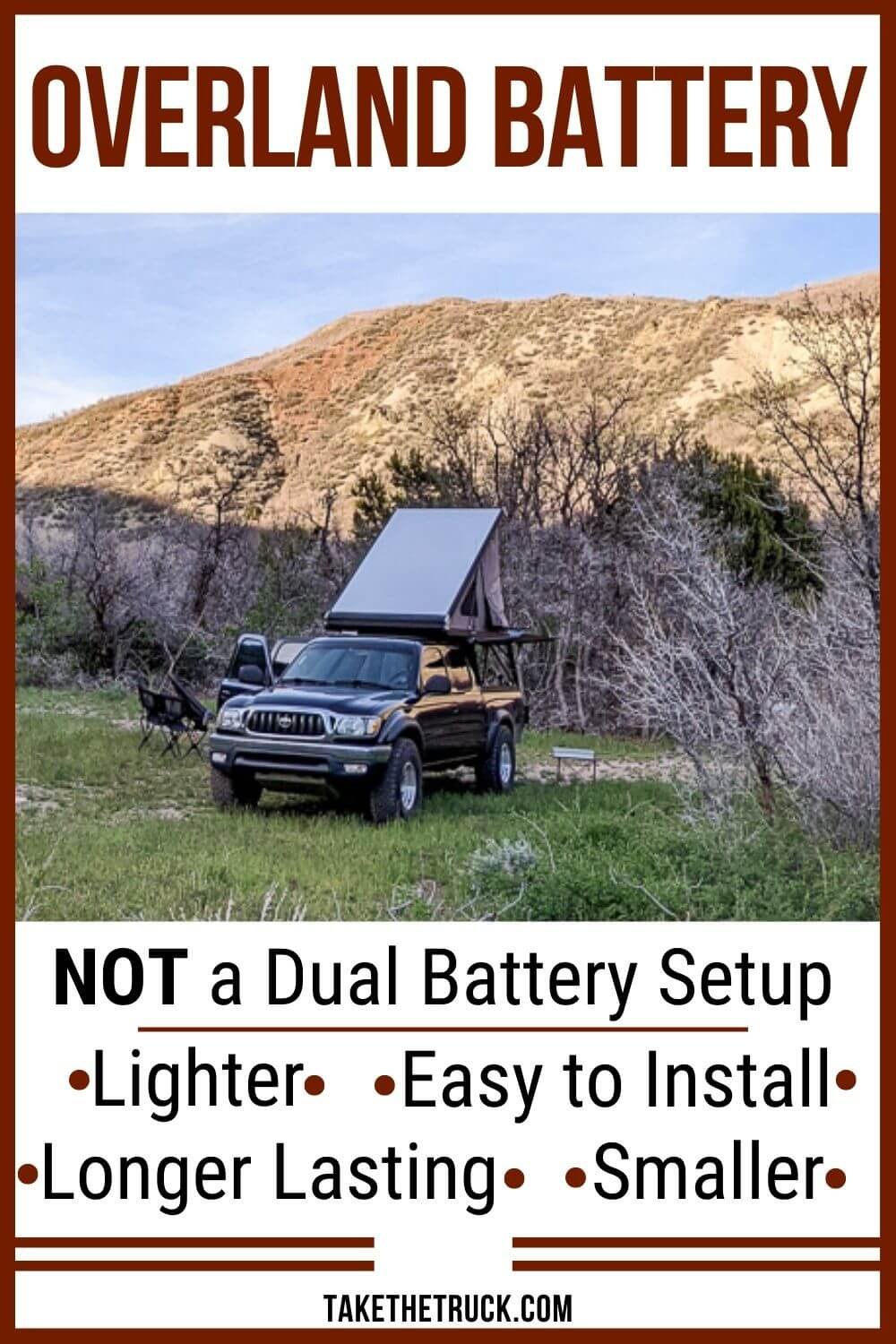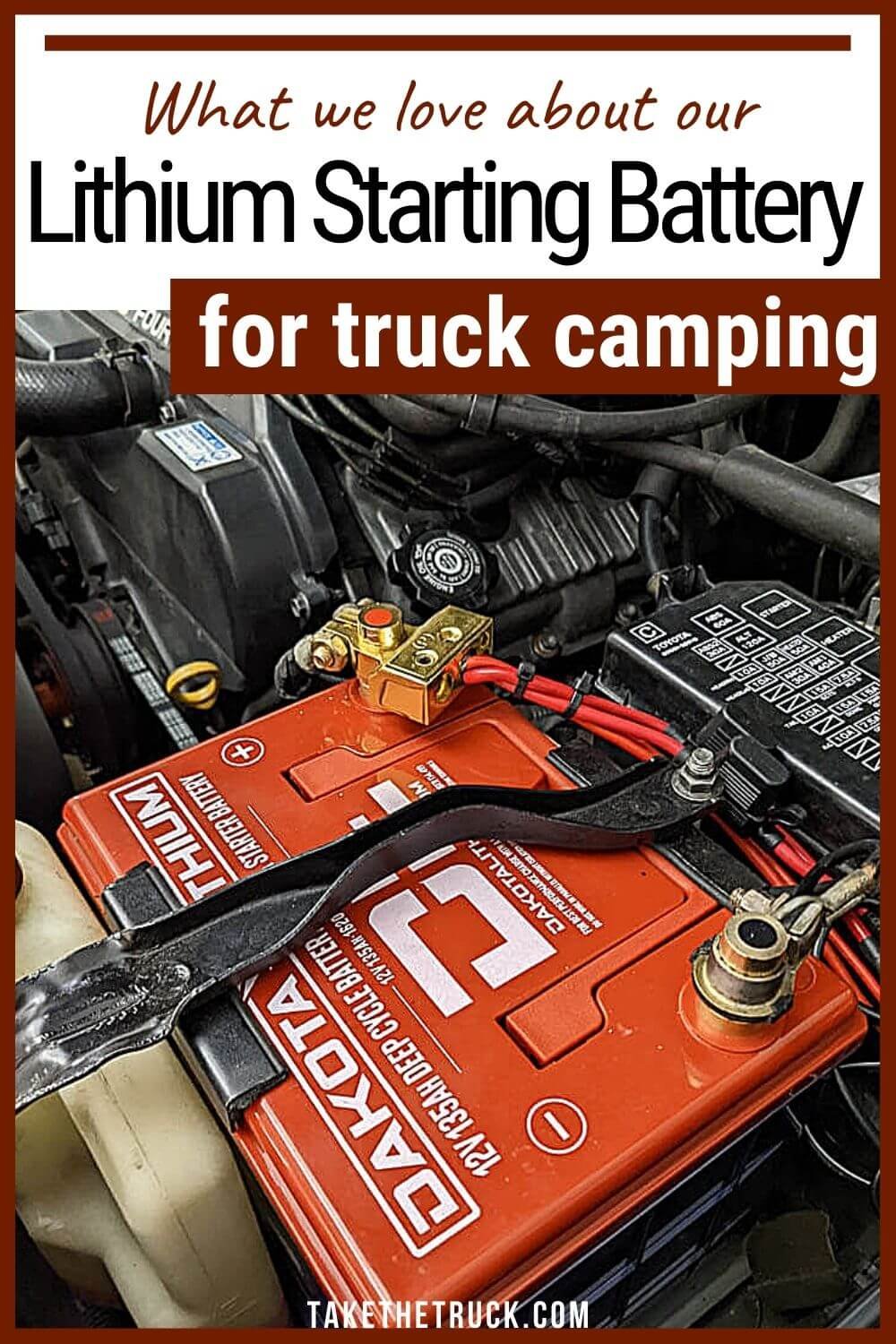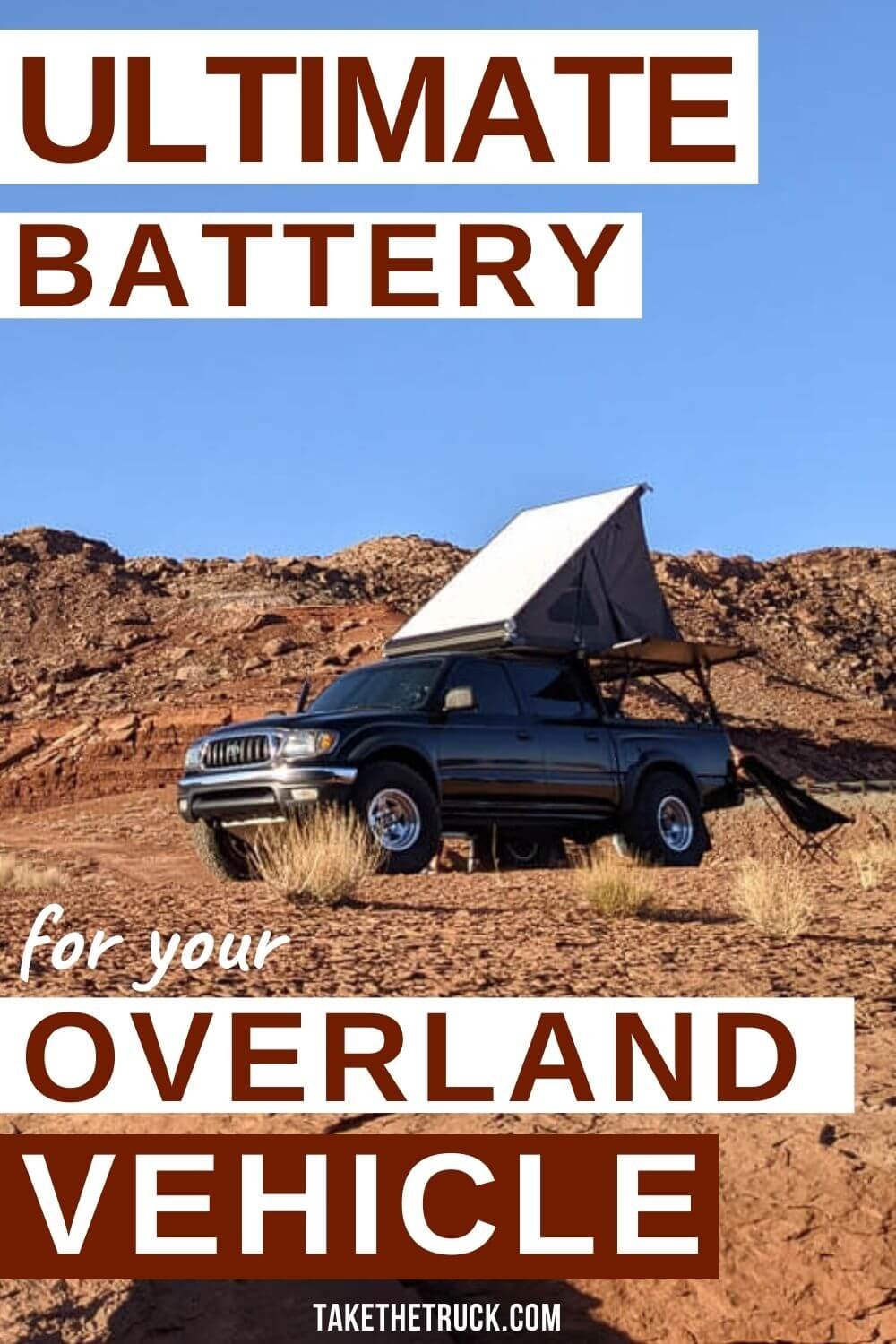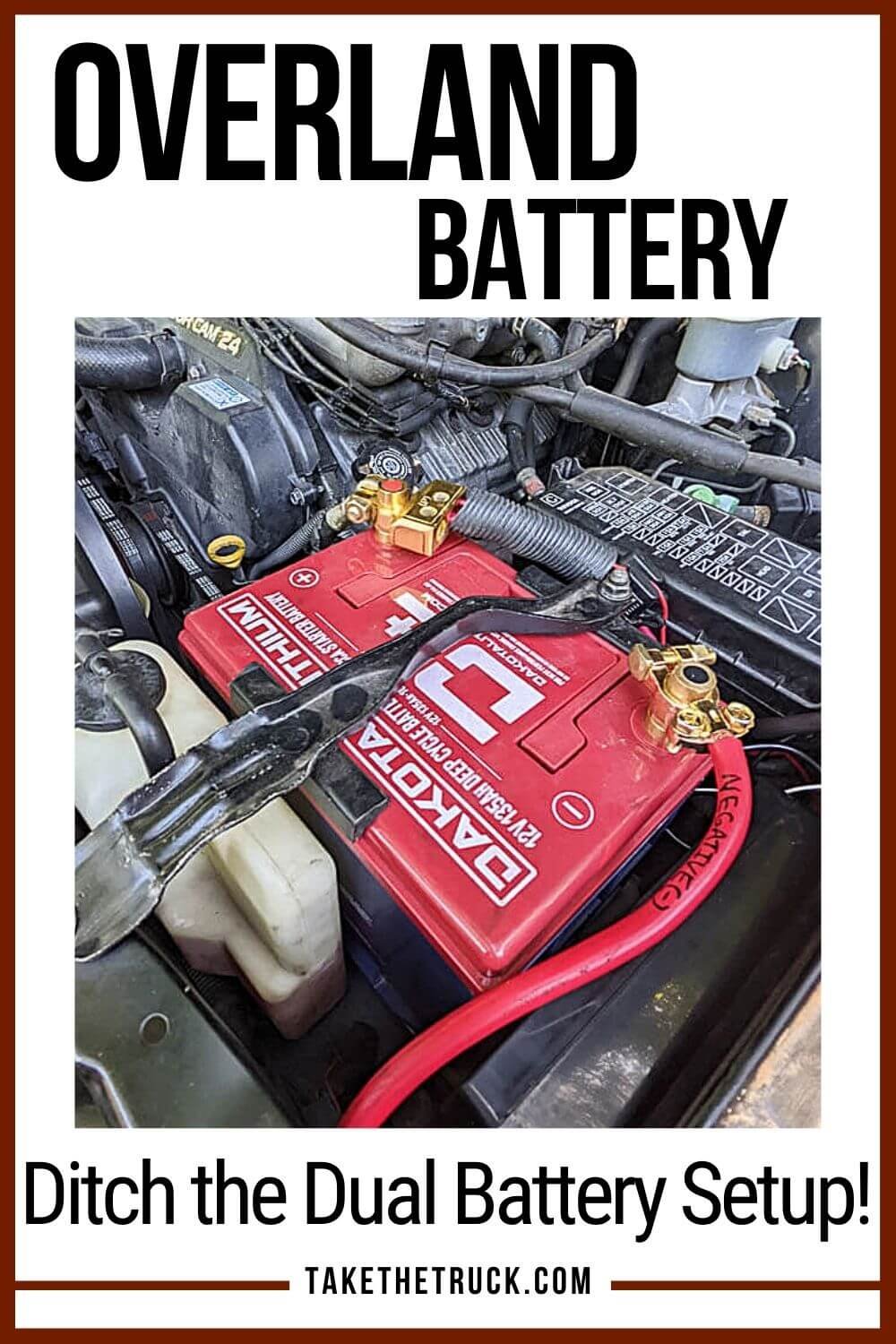The Do Everything Overlanding Battery That May Make Dual Battery Systems Obsolete
For over a decade we’ve been camping and traveling while working remotely, all the time trying to find the very best overland battery solution to meet our power needs. Over the years we’ve tried various dual battery setups, solar generators, and other camping power supplies, each with their own advantages and limitations.
Recently we began researching, planning, and designing the overlanding battery system for our new 1st gen Tacoma overland truck build, and came across a brand new 12v lithium dual purpose deep cycle starting battery - the Dakota Lithium 135ah DL+.
After investing in one and putting it through its paces, we think it just might be the best overlanding battery on the market, and potentially make traditional dual battery systems a thing of the past.
Overlanding Battery Challenges
Historically, travel power solutions and overlanding batteries have suffered from a multitude of limitations and challenges:
Complexity
Traditional dual battery setups can be complicated to install properly, and typically involve integrating an additional battery, a battery isolator or expensive DC-to-DC charge controller, an inverter (if AC power is needed), and properly gauged cable to tie all of these components together.
In our previous overlanding battery system we were able to greatly simplify the traditional dual battery setup by using a lithium solar generator as our second battery.
The solar generator integrated the battery, charge controller, and inverter into a single portable device that greatly reduced the amount of wiring needed. This setup was versatile, easy to use, and easy to remove. However, it still suffered from other limitations we’ll dive into below.
Cost
A properly set up traditional Lead Acid or AGM dual battery setup for overlanding, even using the cheapest of these batteries and basic battery isolator, will cost between $600-$1000, and if you use quality AGM batteries can easily exceed $1000+
Lithium solar generators with enough capacity to handle the demands of powering a 12v camping fridge and other work-remote devices for days on end, or more complex lithium dual battery setups requiring expensive DC-to-DC chargers, can easily exceed this amount and often double it - especially when solar panels are factored in.
Capacity
Traditional lead acid and AGM batteries commonly used in overland battery setups can only be discharged to 50% of their stated capacity without damaging the battery. So, for example, a 100ah group 31 AGM battery will only have approximately 50ah of usable power.
Lithium ion batteries have a much greater usable capacity, typically between 80-100% depending on their chemical composition.
Limited Charging Rates (Specifically In-vehicle DC Charge Rates)
This has been the greatest limitation when using a solar generator in a dual battery configuration for overlanding.
Most portable solar generators on the market such as those made by Jackery, Goal Zero**, Bluetti, and others are typically limited to an average in-vehicle 12v charging rate of 120-240w (depending on the model), so a 1000 watt lithium solar generator will take anywhere from 5 to 10+ hours to fully recharge using the car charger.
**The exception being Goal Zero Yeti solar generators that are used in conjunction with their additional (and very pricey) Yeti Link Car Charger which allows for a 450-750watt in-vehicle charge rate from the alternator.
While you can charge solar generators at a faster rate from solar panels (typically a max rate of 400-700 watts on average depending on the model), you then have to store or mount all those solar panels somewhere in or on your overland vehicle.
Lead acid or AGM dual battery setups for overlanding can recharge at a much higher rate directly from the vehicle’s alternator, something Lithium batteries have historically been unable to do safely - instead requiring an expensive DC-to-DC charge controller as an intermediary to decrease the vehicle alternator’s amperage to a lower/safer level which also decreases the charging rate.
Longevity
Lead acid and AGM overlanding batteries, as traditionally used in dual battery systems, have an average lifespan of 500 cycles, meaning you can deplete them to a 50% state of charge 500 times before they begin to lose capacity or fail.
Lithium Ion (specifically Lithium Iron Phosphate or LiFePO4) batteries, on the other hand, have an average lifespan of 2000-2500 cycles, meaning you can deplete them to 80-95% state of charge 2000-2500 times before they begin to lose capacity or fail.
Size & Weight
Lead Acid or AGM overlanding batteries are extremely heavy and bulky. For example, that group 31 AGM with 50ah (600 watts) of usable power typically weighs close to 80lbs and takes up a space roughly 13” x7” x10” either under the hood or in the bed of the vehicle.
A Lithium battery with a comparable 50ah capacity will be less than a quarter of that weight and about half the size.
Why the DL+ 135ah is the Best Overlanding Battery Solution
While Lithium Ion based deep cycle starting batteries have been around for a while from companies like DCS in Australia and Battleborn Batteries in the US, the DL+ 135ah is the first to solve several of the challenges other overland battery options have faced.
Easy to Install
Installation is incredibly simple! The DL+ is a drop-in replacement for your vehicle’s starting battery, as long as your overland vehicle has an alternator that’s rated under 135 amps and can fit a group 24 battery you should be good to go.
Relatively Low Cost (per watt hour)
While there may be initial sticker shock for something as mundane as a battery, there are a couple factors that make this an affordable overlanding battery:
The average cost per watt hour of most lithium ion based solar generators and batteries averages around $1/watt-hour, so at 1620wh the DL+ 135ah is approximately 30% cheaper per watt-hour.
When it’s compared to traditional lead-acid or AGM overland batteries, the value really becomes apparent! Here’s an example:
It would take two Group 31 AGM batteries (typically rated at appx 100ah each) to have close to the same usable power of one DL+ 135ah battery. The average cost of one high-quality Group 31 AGM battery is around $500 each, so there’s $1000 total.
Now factor in the 500 cycle life expectancy of a standard AGM battery, which is roughly ⅕ the life cycle of the Lithium DL+ 135ah… it would take a total of TEN of these AGM batteries to equate to almost the same usable power of the life cycle of just ONE Dakota Lithium DL+ 135ah battery! That’d be more than $5000!
Plus the DL+ has an 11 year manufacturer warranty which is more than DOUBLE the average.
Plenty of Capacity
At 135 amp hours (1620 watts), it provides enough for us to run our 12v camping fridge and other devices for nearly 5 days straight in the heat of summer. Plus it will recharge off our truck’s modest 80 amp alternator in about 1.5-2 hours of driving (or about the time it takes us to find a new campsite or get to the next hike).
And if you have extremely high power needs while overlanding, you could run two DL+ 135ah in a simple parallel configuration to have an insane 270ah of power!
For help calculating your own power demands while overlanding, check out our post on How to Determine Your Power Supply Needs
Extremely Fast Charging Rate
The DL+ 135ah has an alternator charging profile rated up to an astounding 135 amps (though Dakota states 70 amps is ideal for maximizing longevity).
This means that you could fully recharge all 135ah (1620 watts) in as little as 1 hour. As an overlanding battery, this virtually eliminates the need for carrying solar panels or wiring a solar charge controller to augment your power needs while traveling, and - depending on your power demands - may completely eliminate the need for a dual battery setup.
A 10amp 14.4v wall charger is also included with the battery, so you can use this as a “shore power” connection while overlanding.
Durability
The DL+ 135ah overland battery is made with high quality LiFePO4 lithium cells and rated for up to 2500 cycles at 80%, and it has internal heating for low temp charging and protection in extremely cold climates. Dakota Lithium indicates a optimal operation temperature range as low as -20℉, or up to +150℉. The internal even-heat technology allows for charging below 32℉ and the BMS high temp cuts off at 167℉.
It’s rated by Dakota Lithium at 135amp max continuous discharge, 1000A max 2 second pulse, 900A max 5 sec pulse. This should be sufficient for moderate winching as well! (We’ll be testing this in the coming months and update with the results).
UPDATE (August 2022): The DL+ 135ah lithium battery has been working great for us in winching applications so far on our first gen Tacoma, using our Warn M8000 winch. We’ll follow up again after a full year of use while overlanding, and report back.
UPDATE (October 2022): We have had a lot of questions and concerns about under bonnet/engine bay temperature effects - especially in summer temps, and we personally had these concerns as well. However, Jafffa Adventure’s long-term testing of under bonnet lithium batteries in the Australian heat helped to quell most of our anxiety, and so far we’ve seen no issues in our personal use. We did end up installing hood louvers recently to help alleviate heat build up in the engine bay in slow-moving 4WD scenarios, but this was primarily due to the aftermarket skid plates that we installed on our Toyota Tacoma Overland Truck Build restricting airflow (compared to the factory skid plate configuration). We’ll continue to monitor the temps next summer and report back on this as well.
UPDATE (May 2023): After a full year of use the DL+ 135ah is still going strong in our overland truck setup. It has powered our fridge, lights, laptops, cell phones, as well as the vehicle’s daily electrical needs without issue. In winching applications it’s done well so far for our needs, though we typically only winch for short periods at a time and have not over-taxed the duty-cycle of the winch (where you would see peak amperage draw).
UPDATE (January 2024): Nearly two years, over 20k miles, and another scorching summer and sub-zero winter, and the DL+ 135ah is still working great as our overlanding battery setup!
UPDATE (January 2025): Nearly three years, over 38k miles total, and the Dakota Lithium DL+ 135ah is still working great as our overlanding battery setup in our truck camper! This year it saw our family through a 8000mi trip up the Pacific Coast from California to the San Juan Islands of Washington plus thousands more miles of daily driving and never missed a beat. At Dwight Schrute would say, it’s “Perfektenschlag!”
Compact & Light Weight
This is one of our favorite aspects of the DL+ 135ah as an overlanding battery. Somehow they fit all of this power into a standard group 24 battery form factor measuring only 9.5”L x 6.9” W x 7.75” H and weighing a mere 27.2lbs!
So it’s half the weight of a standard vehicle battery, has five times the power, lasts five times as long, and has a lifetime cost value that is nearly one-fifth that of a traditional AGM lead acid battery. It’s really the best overlanding battery out there!
*(This post contains affiliate links. This means we may receive a small commission, at no additional cost to you, if you make a purchase through a link. See our full disclosure.)
How we installed the DL+ 135ah as our Overlanding Battery Setup
***DISCLAIMER: We are NOT professional electricians. The information provided in this post is bore solely from our personal experience and opinion. A professional should always be consulted when making changes to any electrical system****
Installation
Recently we took an over 4000 mile trip out to Montana and Utah using only the Dakota Lithium DL+ 135ah Lithium Starting/Deep-Cycle Battery* as our in-vehicle overlanding battery.
Prior to leaving, we simply removed the old lead acid group 24 starting battery from our truck, and replaced it with the DL+ 135ah lithium battery. Then we ran 12v power from the battery to our camper using an ARB wiring kit*, and some MC4 waterproof connectors* to connect a pair of 12v Marine Outlets* which power our camping fridge and other devices while traveling.
Boom. Done! No solar. No Inverter. No complex web of heavy gauge wire, breakers, inverters, or DC-to-DC charge controllers. And no second battery taking up valuable space in the vehicle.
Admittedly, this is a very simple overland battery setup, and you can add inverters, solar, or additional batteries to the setup just as well if you’d like. But over the years we’ve realized that simplicity is paramount to enjoying our travels, and the more components to any system, the more points of failure that are introduced.
As a result we’ve pared-down everything we use while traveling to only devices that operate or charge on 12v power. Our fridge, laptops, cell phones, and camper lighting is all 12v…they even make 12v crock pots* and ovens if you want to get fancy with your meal prep!
If you can limit your power needs to 12v as well, it eliminates the need for wiring a massive power inverter, and you can still carry a simple plug-in inverter* for the few times you may find a need for 120v power.
Overland Battery Monitoring
For our initial trip we monitored the battery voltage by tracking the voltage reading from our bluetooth OBDlink MX+ OBD2 reader*, and comparing the voltage reading to this simple LiFePO4 voltage chart:
While this manual monitoring worked okay for ensuring the battery never ran low on power, we realized we wanted a little more detail and accuracy.
So once we returned we installed a Victron Energy 1000Amp SmartShunt* in-between the battery negative and all other system negative connections, and mounted it in a waterproof junction box* next to the battery in the engine bay. This now allows us to wirelessly monitor all power into and out of the battery while overlanding in much more accurate detail.
Overland Battery Management System & Back Up Plan
The Battery Management System that is built into the DL+ 135ah controls and monitors the charging and condition of the internal lithium cells. If the BMS detects an unfavorable condition, such as: low voltage, high voltage, over charging, high temperature, low temperature, etc., the BMS cuts off the battery from the charging circuit to protect the cells.
This disconnect could result in a sudden “load dump” if the vehicle’s alternator is pushing a charge into the battery that is abruptly disconnected, which in turn could result in possible damage to the vehicle alternator’s regulator or diodes.
To help safeguard against this scenario, we adopted a strategy used in marine applications - where lithium alternator charging has been used for years - and installed a Balmer Alternator Protection Module* (essentially an automotive grade TVS diode) to provide surge protection to the vehicle’s alternator and charging circuit in the event of a BMS disconnect.
Anytime you’re relying on a single battery in a vehicle while overlanding, camping, traveling, or otherwise, there needs to be a backup plan in the event the battery is discharged and unable to start the vehicle.
So for this setup, using only one DL+ 135ah lithium battery in your overland vehicle, we recommend carrying a portable jumper pack* to help get you back on the road by providing a jumpstart or to reawakening the battery in the event of a low-voltage cut off (if the battery is depleted down to 10v the built-in BMS has a low-voltage cut off to protect the lithium cells).
After years of looking for the best overlanding battery setup, we feel we’ve finally found the perfect solution in the Dakota Lithium DL+ 135ah. And we hope you find that it fits your long term travel and overlanding battery needs as well!
You can find more info and technical specs on Dakota Lithium’s site.
If you’d like more helpful camping, overlanding, and family travel tips be sure to SUBSCRIBE for our bi-monthly blog updates.
And as always, thanks for reading!
Related Posts
Save this post to your Overlanding Pinterest Board!
We’d Appreciate a Share! Thanks!

